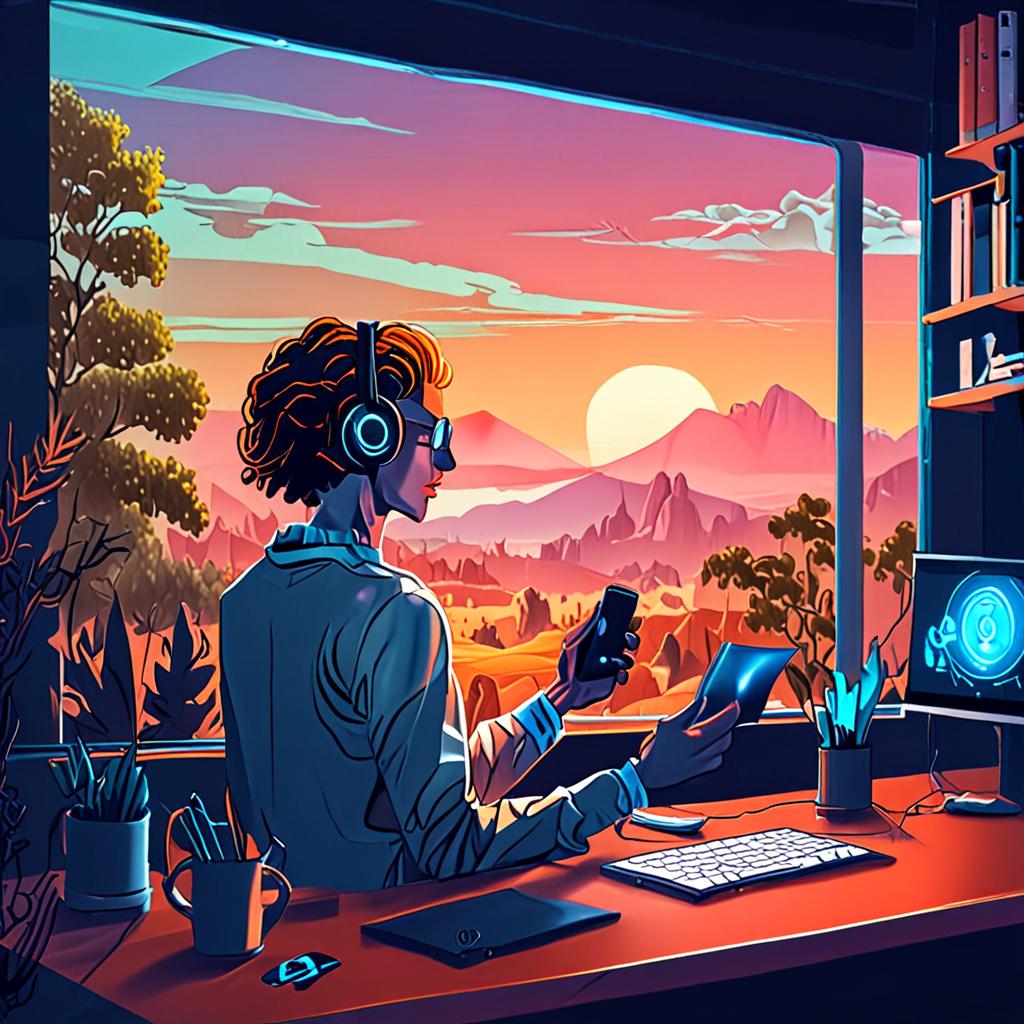Introduction
The shift to remote work has brought numerous benefits, but it has also led to a significant increase in digital eye strain. Prolonged screen time, poor workspace ergonomics, and inadequate blue light protection have become major concerns for professionals. According to a study by the American Academy of Ophthalmology, 58% of adults experience digital eye strain symptoms, including dry eyes, headaches, and blurred vision.
Despite the growing awareness of digital eye strain, many existing solutions fall short. For instance, the 20-20-20 rule, which recommends looking away from the screen every 20 minutes to focus on something 20 feet away for 20 seconds, is often ineffective due to its lack of personalization and limited scope. Moreover, relying solely on blue light filtering glasses or software can be insufficient, as it doesn’t address the root causes of eye strain.
Artificial intelligence (AI) has the potential to revolutionize the way we approach digital eye strain. By leveraging machine learning algorithms and data analysis, AI-powered tools can provide personalized recommendations for reducing eye strain, optimizing workspace ergonomics, and promoting healthy screen habits. In this blog, we’ll explore 10 essential life hacks that harness the power of AI to boost your productivity and eye health
Optimizing Your Workspace: Ergonomic Essentials for Reduced Digital Eye Strain
A well-designed workspace is crucial for reducing digital eye strain, as it allows you to work comfortably and maintain good eye health. An ergonomic workspace setup can significantly reduce eye strain, improve productivity, and prevent long-term eye damage.
According to a study by the American Academy of Ophthalmology, 58% of adults experience digital eye strain, with 45% reporting headaches and blurred vision. By optimizing your workspace, you can mitigate these effects.
To create an ergonomic workspace, consider the following essentials:
- Position your computer directly in front of you, at a distance of about 20-25 inches.
- Place your monitor at a height that allows you to gaze slightly downward, reducing blue light emission.
- Use a document holder to keep papers at eye level, minimizing the need to look back and forth.
- Invest in a good chair with proper lumbar support to maintain a comfortable posture.
AI-powered tools can help you analyze and optimize your workspace. For instance, AI-driven ergonomic software can assess your workspace setup and provide personalized recommendations for improvement. By implementing these changes, you can reduce digital eye strain and boost your productivity.
Minimizing Blue Light Exposure: Strategies for Remote Workers
Prolonged exposure to blue light, a high-energy visible (HEV) light emitted by digital devices, is a significant contributor to digital eye strain. Remote workers, who often spend extended periods in front of screens, are particularly vulnerable. Minimizing blue light exposure is crucial to prevent eye fatigue, headaches, and long-term risks to eye health.
According to a study by the American Academy of Ophthalmology, 60% of people spend more than 6 hours a day in front of a digital device, increasing their risk of digital eye strain. To combat this, remote workers can employ several strategies to reduce blue light exposure. One effective approach is to use blue light filtering glasses, software, or apps that filter out HEV light from screens. Additionally, adjusting the color temperature of devices to warmer tones and following the 20-20-20 rule (every 20 minutes, look away from the screen and focus on something 20 feet away for 20 seconds) can also help.
AI-powered tools, such as f.lux, can automatically adjust screen color temperature and brightness to minimize blue light emission. By leveraging these strategies, remote workers can significantly reduce their exposure to blue light, promoting
Eye Care Best Practices for Prolonged Screen Time: Simple Habits for a Healthier You
Prolonged screen time is a hallmark of remote work, but it can take a toll on eye health. Digital eye strain affects 70% of people who work on computers, leading to headaches, blurred vision, and decreased productivity (American Academy of Ophthalmology). To mitigate this, incorporating simple eye care habits into your daily routine is crucial.
One effective practice is the 20-20-20 rule: every 20 minutes, look away from your screen and focus on something 20 feet away for 20 seconds. This reduces strain on the eyes and prevents myopia progression. Additionally, adjusting the display settings on your device to reduce blue light emission, which can contribute to eye fatigue, is also beneficial.
AI-powered tools can help you develop these habits. For instance, apps like f.lux adjust your screen’s color temperature to reduce blue light emission, while reminders and notifications can help you stay on track with the 20-20-20 rule. By incorporating these simple habits into your daily routine, you can reduce digital eye strain and maintain a healthier, more productive work environment.
Conclusion
The widespread adoption of digital technologies has significantly contributed to the rise of digital eye strain, affecting millions of remote workers worldwide. AI-powered tools and research have, in turn, enabled the development of innovative solutions to mitigate this issue, such as intelligent blue light filtering and personalized eye care recommendations.
To put these insights into practice, experiment with adjusting your workspace setup to incorporate the 20-20-20 rule, positioning your screen directly in front of you and at a comfortable distance to reduce eye strain. Adopt a blue light reduction strategy, such as using blue light filtering glasses, apps, or software, to minimize exposure during extended screen time.
By implementing these evidence-based strategies, you can boost your productivity, reduce eye discomfort, and promote long-term eye health. As you continue to navigate the demands of remote work, prioritize your visual well-being and stay informed about the latest advancements in AI-driven eye care solutions.
